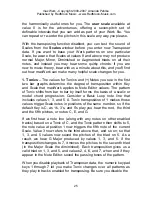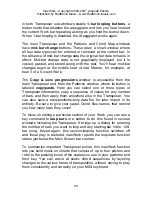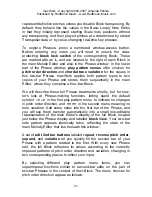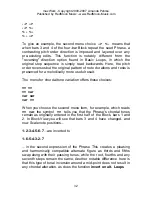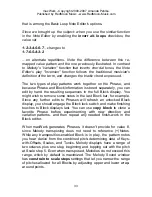
maxWerk - Copyright 2000-2007 Amanda Pehlke
Published by RedMoon Music - www.RedMoon-Music.com
37
II. maxWerk In Depth
We have seen that maxWerk's eleven Basic Loops and two Drum
Loops can play patterns up to four bars long. Add to these the
three special-purpose tracks - Melody, automatic Improv, and the
Noodle track for accompanying live play, and maxWerk gives you
sixteen MIDI channels' worth of creative engines. There is a bonus
Idea layer that you can mix in with any track to make Werkmusic.
2.1 Main Settings
After you have customized Global Setup and Noodle settings upon
getting started with maxWerk, you'll find the thru MIDI destination
automatically switching as you move between tracks. An indicator in
the upper left section of the Main Screen shows the current target
instrument and MIDI channel. Switching takes place because the
auto-thru checkbox is enabled by default. As we have seen in Part
I, from the MIDI-thru heading in the menubar you can manually
change the MIDI target, and if you disable the auto-thru checkbox,
incoming notes and other information remain directed to the track
instrument/channel last edited or selected for thru play.
On the Main Screen, the KB map checkbox appears for the benefit
of those who aren't accomplished keyboardists. Checked, it enables
one of two note mapping modes chosen in the Global Setup
window. Both allow very non-traditional keyboarding behavior. When
chords & scales is selected, above an adjustable split point the
pitches of the currently selected Key and Scale, having been
adjusted by any Global Offset(s), lock to the set of white keys
starting on C, and the black keys are silent. You can use the white
keys above the split point for melodic lead line playing while you
trigger Tonic transposing from the remaining white keys. The black
keys in the left-hand group trigger (+)Notes as you press them, and
remove those (+)Notes when they are released. Starting at C#, the
scale step (+)Notes triggered by black keys are 2, 4, 5, 6, and 7.



